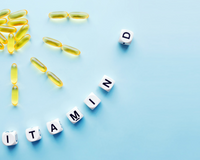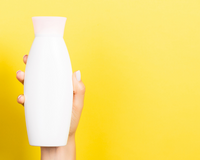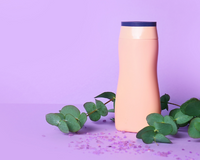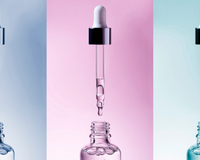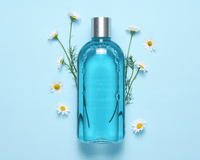It is a chronic rosacea skin care disease that primarily affects the middle part of the face, such as the nose, chin, forehead, and cheeks, and causes swollen tissue. Thus, it begins with episodes of redness and burning and progresses to acne, permanent redness, increased capillaries, skin edema, and swollen tissue. So, what variables contribute to the development of rosacea skin care? There is no recognized etiology for rosacea skin care. Among the suspects are:
- There is a 30-40% family history of genetic susceptibility. There is, however, no conclusive evidence of genetic transfer.
- Infectious agents: Helicobacter pylori (H pylori) bacteria found in the stomach and demodex mites found on the face are the most commonly implicated infectious agents.
- Many environmental factors, including as ultraviolet radiation and temperature variations in the environment, play a role in the onset or worsening of rosacea lesions.
- Psychogenic factors: Changes in the patient's mood and psychological stress can alter intermittent episodes of burning and redness.
- Natural immune system: A recent study found an imbalance in the skin's natural defensive system.
Approximately one-third of individuals have eye involvement. Only eye involvement can be found in 20% of cases, with no skin involvement. Thus, the presence and intensity of cutaneous findings are not linked to ocular involvement. Blepharitis, conjunctivitis, keratitis, photophobia, wetness, burning, chronic ocular edema, generalized eye pain, and blurred vision are all signs of eye involvement.
What Are The Signs And Symptoms Of Rosacea, And How Can You Know Whether You Have It?
Adults between the ages of 30 and 60, with fair complexion and colorful eyes, are the most commonly affecting. It is more severe in men than in women, despite the fact that it is more common in women. There are four stages to the clinical process:
- Period: Burning and redness on the face on a regular basis, rosacea skin care in the forehead area, persistent flushing in the middle of the face, creation of apparent tiny blood vessels on the nose and cheeks,
- The redness of the face becomes darker and more permanent, and small, red swellings or inflammatory pimples appear on the nose, cheeks, forehead, and chin (in contrast to white or black spots).
- Period: Red, swollen nose and/or burning or continuous soreness in the eyes (rosacea in the eye) (rhinophyma). Clinical findings are frequently using to make a diagnosis. To distinguish it from other disorders, however, a biopsy may be requiring. There are no specific test findings for rosacea.
Rosacea Skin Care: What Is The Treatment For Rosacea?
Although rosacea is difficult to entirely cure, therapy can help keep it under control. Precautions in general: The most important thing is to avoid anything that exacerbates clinical symptoms.
Use of sunscreen: The sun is one of the most important contributors in the development of the disease. As a result, you should use sun protection throughout your life. At 2-4 hour intervals throughout the day, apply a sunscreen suggested by your doctor. Wearing a UV-protective helmet and glasses, wearing proper clothing, and avoiding exposure to the sun during peak hours are all recommended.
Creams and gels are commonly using as topical treatments in mild situations. Tretinoin, benzoyl peroxide, erythromycin, clindamycin, tetracycline, 5 percent permethrin lotion, tacrolimus, and pimecrolimus are among the other medications.
Systemic Treatment: Systemic treatment is using alone or in combination with topical medicines in severe situations. Systemic antibiotics and isotretinoin, a vitamin A derivative, are the most commonly using systemic agents.
Various laser treatments and intense pulsed light (IPL) systems can be beneficial in the treatment of facial redness and capillary increases, notably in the treatment of facial redness and capillary increases.
Surgical treatment: Surgical procedures such as surgery, cryotherapy, electrocauterization, or dermabrasion may be utilizing, particularly in severe cases of nose and cheek abnormalities.
What Variables Contribute To The Development Of Rosacea's Clinical Manifestations?
- Beverages and foods (hot and cold beverage and food soup, tea-coffee, spicy foods, bitter, pickles, chocolate, alcohol...)
- Climate conditions (sunlight, hot weather, cold weather, humidity, wind)
- Excessive exercise and psychological stress
- Products for the bathroom, cleaning, and personal hygiene for example it's a complete skin-friendly aloe vera that also helps to alleviate the symptoms of rose disease. (Hot bath and face irritating cleaning materials, cologne, tonic, rose water, wet wipes)
- Prescription drugs (Long-term use of topical corticosteroids for the face)
- Situations that are systemic
What Plants Are Beneficial To The Treatment Of Rosacea Skin Care?
Aloe vera: It is sufficient to apply the gel that you will extract from the inner part of the fresh aloe vera leaves to your clean skin to benefit from this impact of aloe vera. Which promotes the relief of redness in particular.
Honey. Honey, in addition to its various benefits, aids in the rapid healing of inflamed parts of the body and, as a result, helps us fight rosacea. To take advantage of this characteristic, apply the most natural honey you can find to the reddened regions twice a week, wait half an hour, and then wash your skin with warm water.
Cucumber. Cucumber, which is one of the most commonly using natural materials for rosacea skin care. Also helps those with rose sickness. Cucumber slices should be applied to your face or other reddened areas, and the cucumber mask should be left on for 30 minutes to cleanse your skin. You can hydrate your skin and get rid of burning, itching, and redness by using this mask twice a week.
Lemon balm tea or green tea. These anti-inflammatory herbal teas will help you get rid of skin irritations like burning, stinging, and redness. You can get these benefits by drinking one cup of green or lemon balm tea every day and applying the brewed and cooled tea to your skin with a cotton ball.
Ginger and Turmeric: Turmeric and ginger have high antioxidant capabilities and speed up the repair of inflammation in the body. So they don't leave us alone when it comes to rose sickness. You can take advantage of this property by mixing it with honey and consuming it on a daily basis. Powdering turmeric or ginger mixed with honey can also be applied to the skin if desired.


